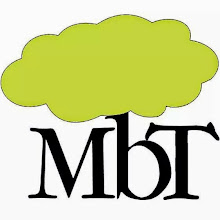While digging around on Trove, I found two articles relating to my Great Great Great Grandmother, Maria Hanniver. Born Maria Feeny in Ireland in 1830, she was the daughter of Edward Feeny, a Farmer. On the 6th of June 1854, at St. George's Church, Dublin she married John Hanniver. His occupation was given as "Gentleman"; hers was not recorded. Jane Feeny and William Morrison were the witnesses to the marriage, and one week later they were married in the same church with Maria and John as their witnesses.
John served in the Irish Constabulary and the Holbourne Police Force. I recently discovered this newspaper article and wonder if he may have been the Head Constable John Hanniver mentioned in the London Express on October 5, 1848, giving testimony regarding the Young Irelander Rebellion of 1848:
Head-constable John Hanniver sworn : I was temporarily stationed in Tipperary in the month of July last. I went to Widow M'Cormick’s house on the Monday following the shooting match. The shooting match was on Saturday. I examined the house inside and outside. I saw several marks on it outside of stones, and what appeared to be bullet marks. On the inside partof the rear face there were also bullet marks.John and Maria came out to Australia, and raised their 5 children: Marie, William, John, Sarah and Edward. By 1872 John's profession was described as "Labourer" . Then tragedy struck.
-—— Cross-examined by Mr. Whiteside: I am a Dublin man. I have never been at a shooting match. I consider a shooting match to be where the peasanry and the military or constabulary come into collision and fire at each other. I suppose the pleasure of the game consists in the number shot at each side? No, sir, I don't think it's a pleasure to shoot a man.
Maria intervened in a fight between two neighbour women, and was struck with a "length of stick, like the end of a clothes prop". Later she complained of feeling ill, lay down on the couch, and died. An inquest into her death found that the blow to the head had not caused her death.
The cause of death was extravasation of blood at the base of the brain. [The Coroner, Dr Youl] did not think the blow on the top of the head produced the rupture of the artery. Excitement would do it. The blow was quite recent. The jury found that the deceased died of extravasation of blood at the base of the brain.This article provides more details about the family and their living conditions which are quite gritty. The area is described as "wooden tenements", and says of Maria and John "The husband and wife had been in the habit of quarrelling, and were addicted to drink.". The closing paragraph of the article offers a grim insight into the night of Maria's death:
Last night the house in which the deceased had lived presented a wretched spectacle. In a dimly lighted close room was the father crying in a maudlin way, in company with the children who now and then broke into a loud moan, while a number of women of the class one sees in such back slums were wandering about the house groaning and talking in a maundering manner, looking at the body, shaking their heads, whispering, and seeming really to be enjoying the misery of the moment as something of an exciting nature. The deceased was about 42 years of age.
The follow up article, reporting on the inquest, also describes Maria Hanniver as "a drunkard" and says she was drunk when she interfered in "the row between the other two woman. One was drunk, and had been beating the other's house with a stick all the afternoon to keep the other's child awake." I guess daytime TV had yet to be invented.








0 comments:
Post a Comment